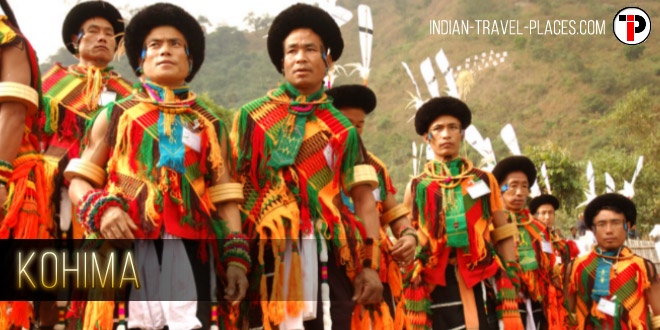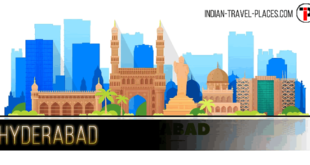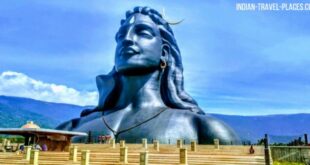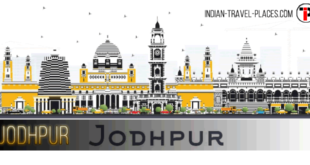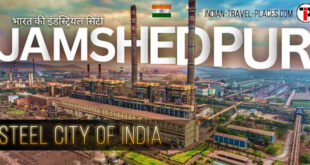Kohima, situated in the south at an altitude of 1444m above sea level, occupies pride of place as the capital city of Nagaland. Sharing its borders with Dimapur and Peren District in the West, Zunheboto and Phek District in the East, Manipur State in the South and Tseminyu District in the North. One of the oldest among the eleven districts of the state, Kohima is the first seat of modern administration as the Headquarters of Naga Hills District (then under Assam). When Nagaland became a full fledged state on 1st December, 1963, Kohima was christened as the capital of the state. Since then, parts of Kohima district have been carved out four times – the first in 1973 when Phek District was created, then in 1998 Dimapur was carved out and declared as a separate district. In 2004, Peren District was created and it was for the fourth time that Kohima district once again gave birth to one of the youngest districts in the state called Tseminyu District in the year 2021.
The name Kohima derives its name from “KEWHIRA” which is the name of the village where Kohima town is located. Kohima village , also called ‘Bara Basti’ is the second largest village in Asia and forms the North-Eastern part of Kohima Urban area today.
| Name: | Kochi (Kewhi–ra) |
| Location: | Capital city of Nagaland State, India |
| Climate: | Summers: 31°C (Max), 16°C (Min) | Winters: 20°C (Max), 4°C (Min) |
| Best Time to Visit: | October to April |
| Nearest Airport: | Dimapur Airport |
| Railway Station: | Dimapur Station |
| Must Visits: | War Cemetery, Catholic Cathedral, Zoological Park, Nagaland State Museum, Bara Basti, Dzukou Valley, Japfu Peak |
| Language Spoken: | Nagamese, Hindi, English, Angami |
| STD Code: | 0370 |
Kohima is a picturesque yet profound city situated at the northeastern border of India. It is the capital city of the state of Nagaland. Spread over an area of 20 square kilometers and elevation of 1500 meters above the sea level, Kohima, has a moderate and pleasant climate that is not too hot in summers and not too cold in winters. Embraced by the eastern Himalayan mountain range and enhanced in magnificence through calm and serene environment and a patient and loving lifestyle adopted by the locals, Kohima is an unexplored territory. Unpolluted air and clean environment makes the trip all the more worthwhile. Agriculture makes for the major chunk of the economy with government jobs in banks and other administrations take up the second place; equally aided by tourism.
Beginning in the 1840s, the British people’s consistent effort to penetrate the Naga territory had failed for almost four decades, such was the resistance shown by the Naga people who had always been free and never been ruled by any empire before. During the World War II, the battle of Kohima became the turning point during the Burma campaign. In this hand to hand battle, for the first time Japanese had lost on the initiative to gain more allies that prevented them from acquiring a high base from where they could have moved onto to the lands of India. Kohima hosts a war cemetery in memory of those who gave their lives in this battle. “When you go home, tell them of us and say; for their better tomorrow, we gave our today”. This epitaph carved on the memorial of 2nd British Division in the cemetery is now a world renowned Kohima Poem.
Kohima is easily accessible by rail, road and airways. The nearest airport is 74 km from Kohima (at Dimapur) connecting it to important cities such as Delhi, Kolkata, Guwahati and Imphal. The nearest railway station is also Dimapur, well connected with major cities of India. The National Highway 39 connects Kohima to Dimapur, and Dimapur to all major cities of India. Kohima boasts of several tourist attraction places. The Catholic Cathedral, which the biggest cathedral in the whole of north east India with an soulful environment for praying; War Cemetery, which is a memorial site with well maintained gardens and graves for all those who died in the battle of Kohima, stands as the symbol of bravery; Nagaland state museum, which give a glimpse of history and culture of various tribes; and a zoological park rich in well preserved flora and fauna make up for some superb tourist attractions in Kohima. Apart from these, the Dzukou Valley and Japfu peak make up for awesome trekking sites in Kohima.
Best Time To Visit Kohima
A trip to the picturesque town of Kohima takes you away from the hubbub of city life and helps you to unwind amidst its green environs. Placed in the amazing frontiers of the Himalayan region, the idyllic setting of the region makes it a perfect family holiday destination and a real haven for the wanderlusts. Particularly if you are a city dweller, then the unpolluted air and fresh environs gives you a pleasant break from the city. Serving as a typical Naga town, a trip to Kohima helps you get up, close and personal to the exotic tribal culture of northeast. Boasting of an incredible climate, every season of the year offers its own specialties to the land. Although every season has something to offer of its own to the tribal city, it would be better to explore the place at the right time of the year. Go through the writing below to know more on best time to visit Kohima.
When To Go To Kohima
Weather
Situated at an altitude of 1500m above sea level, Kohima enjoys a moderately humid subtropical climate. This means that the city has sublime summers and pleasant winters. The summers in the region commences in March and lasts until June. The summers here are never too hot and the temperature usually never soars beyond 310 C. Therefore, if you are looking to escape from the sweltering sun during summers, then Kohima is the place to go. The monsoon here, which extends from July to October, is marked by heavy cloudburst. Although, the downpour adds to the lush of the woods, it isn’t the ideal time to make a visit to the city. The winters, extending from November to February, is pleasant, save for January, which is the coldest month of the year.
Best Time To Explore Kohima
Although Kohima enjoys a pleasant climate all throughout the year, to get the best of the place, you need to plan your trip anytime between October to May. Sublime weather perfectly complemented by idyllic view of the city helps you to bask in a stunning view of the hilly region. Along with the pleasant weather, the myriad celebrations and festivities that are hosted year around adds to the excitement of your trip. The noted festivals of the region like Chega Gadi in October, Sekrenyi in January, Hega in February and Ngada In November displays the proud ethnicity of the people.
Things To Do
Flanked by jaded woods and spectacular vales, a trip to Kohima is nothing short of an once-in-a-lifetime experience. Of all the myriad attractions that this city boasts of, Catholic Cathedral definitely warrants a mention. Sticking out as one of the major landmarks in Kohima, this Cathedral is indeed one of the largest in the entire northeast and is a must-visit. To fathom the city’s impeccable historical background and experience authentic Naga culture, you must visit the Nagaland State Museum. This depository, which hosts antique collections, status, pillars and other accumulations, gives you a sneak-peek into the tribal heritage. If you are somewhat of a nature enthusiast, then hitting the zoological park will bowl you over with its exotic collection of wildlife and plants. Apart from rubbernecking, you can also indulge in a bit of shopping and stuff your bags with regional specialties like colorful shawls, bags, wooden carvings, decorative spears and attractive handicrafts. And yes, before you bid adieu to Kohima, don’t forget to scarf on its eye-brow raising yet lip-smacking local cuisine.
How To Reach Kohima
There is no other better place in India to witness tribal culture than the remote terrains of Kohima. Being the home to diverse cultures and several tribal sects, the tribal city of Kohima boasts of a string of celebrations all the year around. To explore the state, start your journey from its capital, Kohima. Apart from participating in the myriad celebrations, Kohima is the perfect place to go trekking or just gaze at the beautiful topography of the region. Kohima has a blend of colonial styled architectures, colossal monuments and well-manicured green parks that just adds to the charm of the city. While you are in the land of festivals, don’t forget to witness the revelries that gives you a sneak-peek into the vibrant nomadic life of the people there. If you plan to visit the region, then make sure to plan your trip during the Hornbill festival. During this celebration, you can catch a glimpse of the different tribes draped in their splendid colorful and traditional attire along with a long string of jollity performances such as dance, music, parades, and sports, variety of food, fairs, rituals and religious ceremonies that bind the various clans of Nagaland together. Scroll through the article to know more about how to reach Kohima.
Traveling To Kohima
By Air
The town of Kohima does not have an airport. However, if you choose to travel by air, then you will have to stop by at its nearest airport. The closest landing field from Kohima is Dimapur, which is located at a distance of 74 km from the main town. Dimapur airfield operates only domestic flights commuting within the region. You can reach Dimapur from the major cities of Guwahati and Kolkata, as there are direct flights to this place. Once you embark at Dimapur airfield, you can hire a cab to reach Kohima, which is just a short two-hour drive from Dimapur. For international travelers, you may need to take a flight to Kolkata or Delhi international airport first before taking a connecting flight to Dimapur. Kolkata and Delhi are the only two airports that operate domestic air carriers to the region.
By Rail
Apart from being lodged in a hilly terrain, Kohima is strategically located at the broader of Burma. As a result, this city doesn’t have a railway station of its own. The closest railway junction in the region is at Dimapur that is said to be connected to the nearby towns and the important cities of Kolkata and Guwahati. Even though a journey through trains is a time consuming affair, it is one of the best ways to reach Kohima as it is relatively cheaper compared to air travel. Take a trip through the trains to experience some of the spectacular views of the bordering mountain range.
By Road
Despite of being directly inaccessible by air and rail, the town of Kohima has a good network of roads. The national highway 39 connects Kohima to the neighboring states of Meghalaya, Tripura, Arunachal Pradesh, Manipur and Mizoram. The state highways also connect you to the cities of Shillong and Guwahati from where you can also reach other states in the region. A few private buses commute back and forth in the province for a nominal price. If you prefer to travel by taxi, then hop into any of the SUV’s that re easily available in Kohima.
Entry Formalities
Since Kohima is located close to the northeastern border of Burma, the Indian government has restricted the entry to this region especially for foreigners. So, if you are an international traveler, ensure to gain a permit to this region form the Indian Missions abroad or the Foreign Regional Registration office (FRRO) located in Delhi, Mumbai, and Kolkata or from the immigration office and Home Commissioner office in Chennai. According to the permit, foreigners are given a specified amount of time, which is further extendable to ten days. As for Indian nationals, you are required to obtain the Inner Line Permit from the Deputy Resident Commissioner at Nagaland House from Delhi and Kolkata. For further detailed information on the entry, formalities do get in touch with your local travel agent.
Places To Visit In Kohima
If you are fed up of the beaches and the hills and desperately seeking for some change at least in your vacation plans, then you must visit Kohima, the gorgeous capital city of Nagaland. Lodged amidst beautiful hilly terrain, the place provides a breathtaking view of the pristine land and a rare peep into the intriguing tribal culture and customs of the city. Once you set your feet into the land of warrior tribes, you will be swept over by tattooed men and vibrantly draped women who are ever willing to play hospitable hosts to you. Apart from its natural wealth and exotic tribal culture, Kohima delights you by its warm temperament, fascinating history, curious lifestyle and attractive celebrations. Dotted with many tourist attractions, a visit to Kohima opens your doorways to a completely different world. To know more about the must-visit tourist attractions in Kohima, go through the writing below.
Tourist Attractions In Kohima
War Cemetery
War cemetery in Kohima is a symbolic memorial built in the memory of thousands of officers and brave soldiers who lost their life during World War II. As per the records, during this war, Kohima played a strategic role by blocking the Japanese invaders at the borders of India. Today, as you walk down this cemetery, you will be mesmerized to see the lush green carpets holding the decorated graves. Moreover, the bronze plate attached to every grave and inscribed with interesting epitaph makes for a must-read.
Zoological Park
The Zoological Park at Kohima is admired for its rich collections of flora and fauna. Standing beautifully on the hilly-slope, the inclined portion of the region has been brilliantly used to create a space for animals where you can witness some of the rare species like the Golden Langurs, the Blyth’s Tragopan and exceptional varieties of Orchids. Apart from catching up with some extraordinary wildlife, the place also offers a wonderful atmosphere for children by facilitating special play zone and other fun entertainments.
The Catholic Cathedral
The Catholic Cathedral, situated in Aradura Hill, is one of the major attractions in Kohima. Serving as the most admirable and biggest church of Northeastern Indian, a visit to Kohima is incomplete without enjoying the beauty of Catholic Cathedral. With its refreshing new modern look and wonderful architecture, the church demonstrates the creativity of the artisans. Being located on the hill, the spectacular view of entire area further enhances the beauty of the church.
Kohima Village (Bara Basti)
Kohima Village or Bara Basti located on a hill facing the Kohima town serves as one of the largest and densely populated villages in Asia. As you enter this village, the large wooden gate, elaborately carved weapons and skull of mithun welcomes you to the interesting Naga world. As you enter the village, the Naga tribes display their unique tradition through elaborate architecture of their homes and attractive accessories such as horn shaped wooden carvings, huge basket and others placed in front their home definitely takes you to completely new world.
Museum
The State Museum in Kohima houses some of the rarest and attractive collections belonging to different tribes of the region. Established with an aim to provide an insight into tribal culture and their lifestyle, the museum attracts people visiting this land. Some of the amazing collections of the museum such as ethnic dresses, clan motifs, weapons, utensils and other articles display the glory of Naga tradition. Apart from these, the books and writings displayed in the museum provide additional knowledge on tribal history and culture.
Naga Bazaar
The Naga bazaar is the main market area of the city, which is noted for its livestock. From vegetables to fruits and from yummy food to colorful attractions of the place, the market fulfills all your needs. A visit to this market also provides you an opportunity to have a glance at tribal cultural and to mingle with the local crowd.
 ITP Indian Travel Places: Food, Travel, Tourism Business Events and Trade Shows
ITP Indian Travel Places: Food, Travel, Tourism Business Events and Trade Shows
